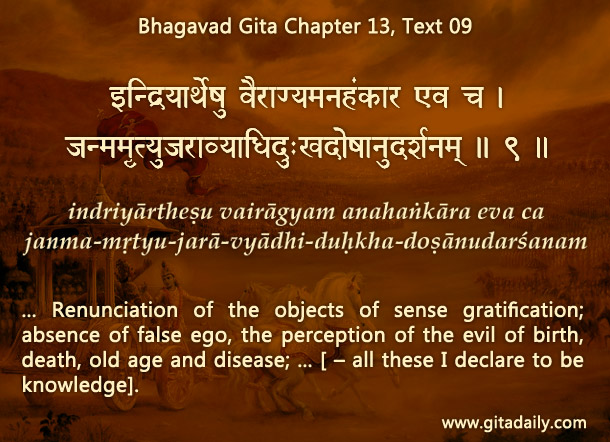Death. We see it around us daily, all the more so nowadays with the media bringing global news about natural and manmade disasters.
Despite such frequent sight of death, we don’t think of death as something that can happen to us at any moment, maybe even the very next moment. Of course, at an abstract conceptual level, we all know that we are going to die. But we often think of death as an event so far away in the future as to not require any immediate consideration. Perhaps the most graphic example of our treating death as irrelevant for ourselves is the entertainment industry’s coopting it as merely an exciting event. In action movies, when people see some death-inducing action such as blowing up of a huge building, they often get a kick out it, deeming such action thrilling.
The Bhagavad-gita (13.09) brings death into our realm of immediate relevance when it recommends systematic contemplation on death and other miseries of material existence such as old age and disease. In fact, the Gita lists such contemplation as an element of knowledge, implying that the knowledgeable engage in contemplating these realities. By such sustained contemplation, we can transform the sight of death into insight about our mortality, stimulating serious enquiry about the possibility of immortality.
The same Gita section (13.08-12) that lists twenty items of knowledge concludes with two items: appreciating the eternality of spiritual knowledge and searching philosophically for the truth (13.12). For such intrepid spiritual explorers, Gita wisdom offers philosophical understanding of our core identity as non-material souls and its practical realization through systematic yoga practice.
When we are thus spiritually informed, sight of death becomes not an unnerving reminder of our imminent mortality, but a precious pointer urging us to realize our spiritual immortality.
To know more about this verse, please click on the image
Explanation of article:
Podcast:
Download by “right-click and save”


Leave A Comment